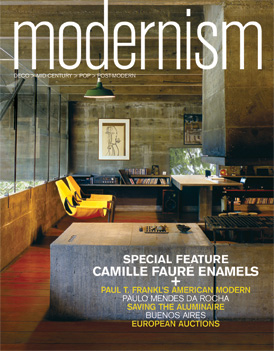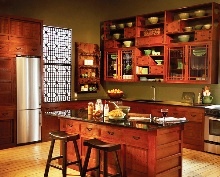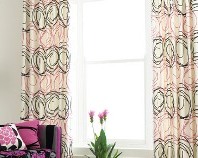Antiques: Investment & Fashion
 September 3, 2007
September 3, 2007 Irwin Weiner -- We were taught in design school that it's easier to sell an expensive piece of furniture if it's described as an investment piece. The idea was that when showing a client their floor plan, the designer would casually say something like, "Oh well, I guess we can look for the investment pieces after construction," and then breeze ahead.
The seed would have been planted.
Investment pieces typically refer to antiques. In a more contemporary interior, these might have been Art Deco pieces, Biedermeier, or Asian items. In more traditional interiors, these would have been 18th Century French or English antiques. The point was that no matter what a client spent, the piece would increase in value and, at the very least, maintain its original cost.
Even if a residential design client wasn't keen to "invest" in furniture, it was good to know that in addition to its value, a piece of furniture could be passed down from generation to generation. It contributed to your net worth, but it also had the sentimental value to become a family heirloom. Many of us have fond memories of growing up in our family homes and seeing an object that might have been in our grandparents' living rooms. Seeing familiar pieces in fresh surroundings is a joy.
Times have changed, and it's easier to shop for investment pieces -- and to sell your investments. Antiques and Mid-Century furniture, all incredibly stylish, are now showcased on sites like Bond & Bowery and 1st Dibs. They're teriffic websites, and I think their selections must be supervised by the Decorating Police. Their ability to group items in various categories is tremendous. When looking for a daybed, I was able to enter the word daybed, and an enormous selection popped up. It would've taken days of shopping to have seen such a selection without this electronic resource.
Websites like eBay, Bond & Bowery, and 1stdibs make purchasing antiques incredibly easy. Plentiful sourcing and the ability to compare styles and prices take the usual anxieties out of the selection and decision-making process.
But these sites have fostered new dilemmas. What if my selection of daybeds on 1stdibs this week might not be as stylish as next week's inventory? With an easy parade of merchandise on the web, we're seeing antiques in the same terms as fashion. We've come to terms with spending $1,000 for a nylon designer bag that we can only wear for a season or two, so why can't we purchase, then resell our antiques in the same way? Antiques may still be expensive, but all of a sudden, they're not so precious.
This trend makes me miss the old investment piece and family heirloom mystique surrounding antiques.
 Twenty years ago, Art Deco was hot. Now it's Mid-Century Modern. This makes sense since the latter period furniture came about twenty years after the former, and the trend curve left one period behind and buoyed up another. At a recent Modernist sale at Rago Auction in Lambertville, New Jersey, Art Deco pieces fetched much lower prices than the Mid-Century (www.ragoarts.com).
Twenty years ago, Art Deco was hot. Now it's Mid-Century Modern. This makes sense since the latter period furniture came about twenty years after the former, and the trend curve left one period behind and buoyed up another. At a recent Modernist sale at Rago Auction in Lambertville, New Jersey, Art Deco pieces fetched much lower prices than the Mid-Century (www.ragoarts.com).
I'm left pondering two questions about antiques:
1. The first issue has a kind of stock market investment theme. If I would have bought Mid-Century when I couldn't afford Deco, I'd now be able to buy the Deco and sell the Mid-Century at a profit. With this kind of hindsight, what should I buy right now if my primary interest is in collecting antiques as investment pieces?
2. Biedermeier isn't so hot now, and neither is Art Nouveau. (Of course, premium pieces of any period are always collected and therefore, expensive.) Why don't I buy exactly what I love and not be swayed by furniture fashion?
The answer to question 1 is: Stick to your day job! It's hard to predict interior design trends with such accuracy -- and furniture storage can be expensive.
The answer to question 2 is: Absolutely! Buy what talks to you.
What's your personal approach to buying and selling antiques? Thank you for your post . . . .













